
The island of Tredelmarkt (Trödelmarkt), which in German means the island "Flea Market" / Flea Island, which is also known as the island of Love (Liebesinsel) is a small island located on the Pegnitz River in the western part of the historical center of Nuremberg.
Nowadays, as many centuries ago, the island, like the Pegnitz River, separates the southern and northern parts of the old city of Nuremberg.
The market on the island existed in the Middle Ages. At that time, pigs were traded in the market, so the trading area on the island was called "Säumarkt".
Mills have been operating on the island since 1440.
In 1444, a butcher shop (butcher house) was built on the island.
Since the 16th century, residents of the northern side of the old town began to trade old and used things on the island. Therefore, in 1809-1810, the island was renamed the "Flea Market".
From 1895 to 1897, a full-fledged market complex was built, which replaced the old market shops.
The entire complex was completely destroyed during the Second World War. During the restoration, they tried to adhere to the old forms of buildings.
Today, the island "Flea Market" is no longer a market. This is a very colorful, attractive and romantic place for walking and relaxing, where you can take a walk, lie on the green lawn (the eastern nose of the island), relax on benches or admire the Pegnitz River and the buildings on its banks from one of the terraces on the island.
No wonder this place is also called the island of Love. In addition, not all guests of the city know about the island, so it is considered to be located "far away" from tourist trails.

In the center of the island, where once there was a market, today there are small and bright buildings of a characteristic ensemble, in which numerous shops and boutiques are located. There are also cafes and restaurants.


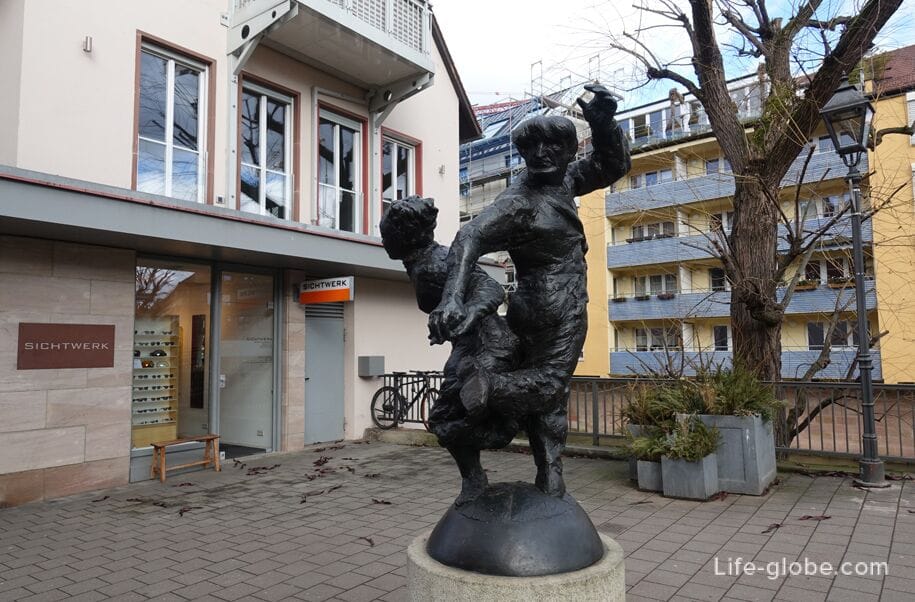
View of the eastern bow of the island from Meat Bridge (Fleischbrücke). A green lawn, buildings on the island and two bridges leading from the island to the southern and northern banks of the river are visible: the Karlsbücke Bridge - on the left in the photo and the Schleifersteg Bridge - on the right in the photo.
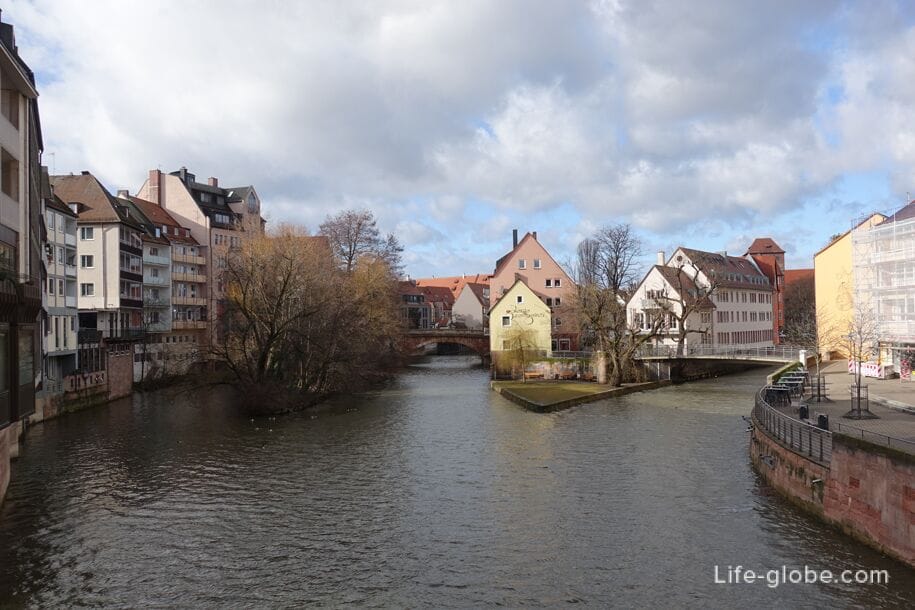

When two previously separate city fortifications located on both sides of the river (north and south) were united across the Pegnitz River between 1320 and 1325, the so-called Hangman's Tower (Henkerturm /Henkerturm) was built as part of the fortifications on the western tip of the island.
Initially, the tower protected the outflow of the river, but lost its function in 1400, when the last city fortifications were built.
The tower was given to the city executioners, who lived in a small house, the so-called Executioner's house, attached to the tower. The executioners also used the tower itself and a connecting superstructure bridge that led across the river, from the Executioner's Tower to the north side of the city.
The Hangman's Tower has a rounded convex structure on the west side, whereas on the south side it is square. On the east side of the tower is the Hangman's house, which stands out with red and white Franconian shutters.
The connecting bridge from the Hangman's Tower is two-arched, pointed, made of sandstone, with a built-in half-timbered roof and a gable roof. This bridge is also known as the "Pegnitz Bridge" (Pegnitzüberbrückung).
In 2007, a small museum of the criminal history of Nuremberg (Henkerhaus museum) was opened in the executioners' rooms, which is illustrated by the example of the diary of the city's most famous executioner, Franz Schmidt (circa 1600).
On the north side of the river, the bridge is adjoined by: a half-timbered building of a former wine warehouse (Weinstadel) and a square water tower (Wasserturm).
All these buildings on the western edge of the island form a single ensemble, which is one of the most famous, photographed and, without a doubt, impressive and unforgettable architectural ensemble of Nuremberg. More about the ensemble...
In the photo from left to right there is a wine warehouse, a water tower, a connecting bridge and an Executioner's tower. Photo taken from the Maximilian Bridge (Maxbrücke)
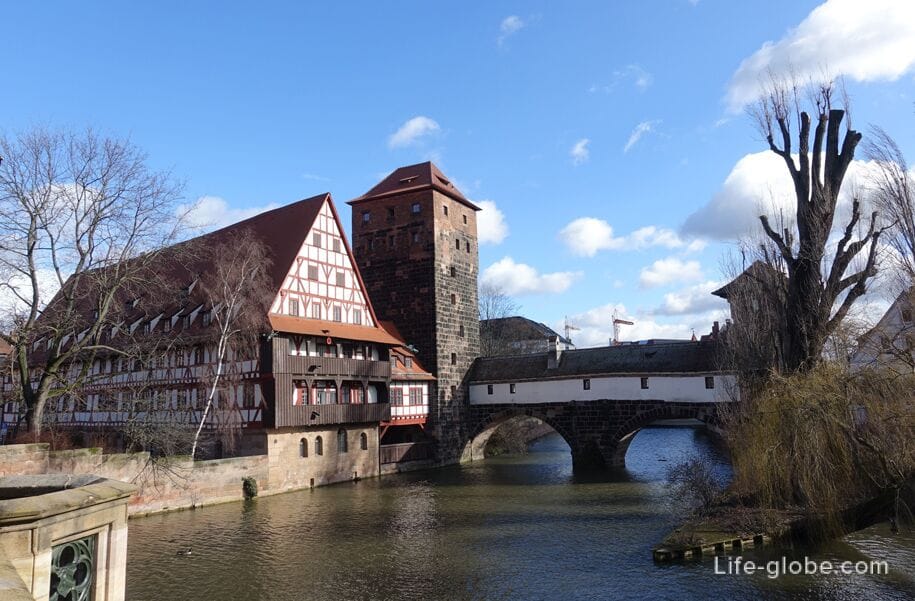
View of the Hangman's Tower and the western tip of the island

The Hangman's house is clearly visible from the Flea Market Island itself or from the northern embankment of the river.
In the photo from left to right - the Hangman's house and tower, the connecting bridge and the water tower

The island can be reached by four bridges connecting both the northern and southern banks of the Pegnitz River.
At the western edge of the island is perhaps one of the most famous bridges in the city - the Hangman's Bridge (Henkersteg / Henkersteg).
The bridge was first built in 1457. In 1595, the bridge was washed away by a severe flood. After that, the bridge was restored.
During the Second World War, the bridge was damaged and reconstructed in 1954.
The bridge got its name "Hangman's Bridge", which literally translates from German as "The Way to the Executioner", because of the nearby Hangman's Tower.
Today, the Hangman's Bridge is a wooden covered pedestrian bridge. It starts at the Hangman's Tower on the island and leads in a southerly direction to Unschlittplatz (Unschlittplatz) and "Fat house" (Unschlitthaus).
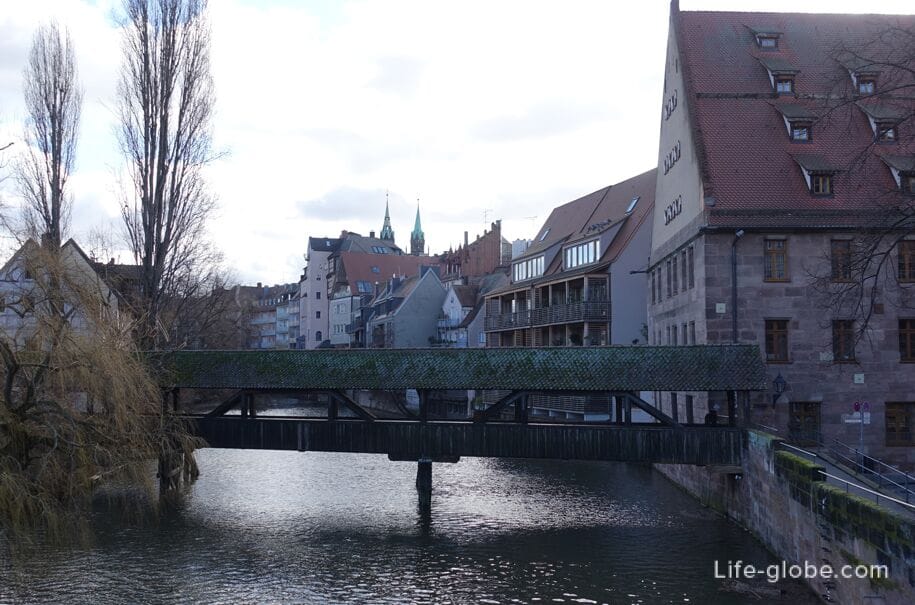


View from the Hangman's Bridge to the island - on the left and Charles Bridge
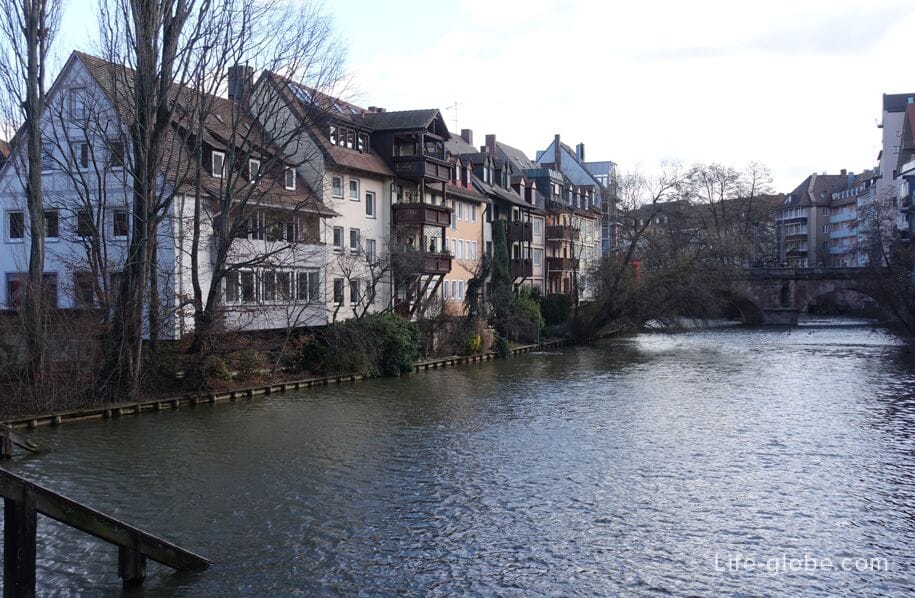
The central part of the island is connected with the banks of the river by pedestrian and drivewayCharles Bridge (Karlsbücke / Karlsbücke), which consists of the north and south bridges:
- the north Charles Bridge (nördliche Karlsbrücke) or the lower Charles Bridge (Untere Karlsbrücke), connecting the island to the north side of the river.
A small two-arched sandstone bridge was built in 1486 and has largely survived to the present day.

View of the north Charles Bridge - on the left and a dense row of houses on the island of Love

- south Charles Bridge (südliche Karlsbrücke) or upper Charles Bridge (Obere Karlsbrücke), connecting the island to the south side of the river.
The former names of the bridge: "Long Bridge" (Lange Brücke), "Hanging Bridge" (Hängende Brücke), "ABC Bridge" (ABC-Brücke), "Elizabeth Bridge".
Originally the bridge was a simple wooden bridge, which was destroyed in 1451. In 1452, a wooden covered bridge on stone pillars was erected in its place.
In 1603 and 1604, a wooden bridge 40 meters long and 7.5 meters wide was erected in its place by the builder of the city of Nuremberg, Wolf Jacob Stromer.
The dilapidated bridge of 1728 was replaced by an existing two-arched sandstone bridge, which was later named after the then Emperor Charles VI and his wife Elizabeth. The bridge was originally called "Kaiserbrücke" (Kaiserbrücke) or "Elisabethbrücke" (Elisabethbrücke). Subsequently, the name "Charles Bridge" was fixed for the bridge.
In the center of the bridge there are two obelisks facing each other, with imperial symbols and inscriptions. The symbol of peace - an olive branch in the beak of the imperial eagle on top of the eastern obelisk - testifies to the peacemaking victories of Charles VI over the Turks.
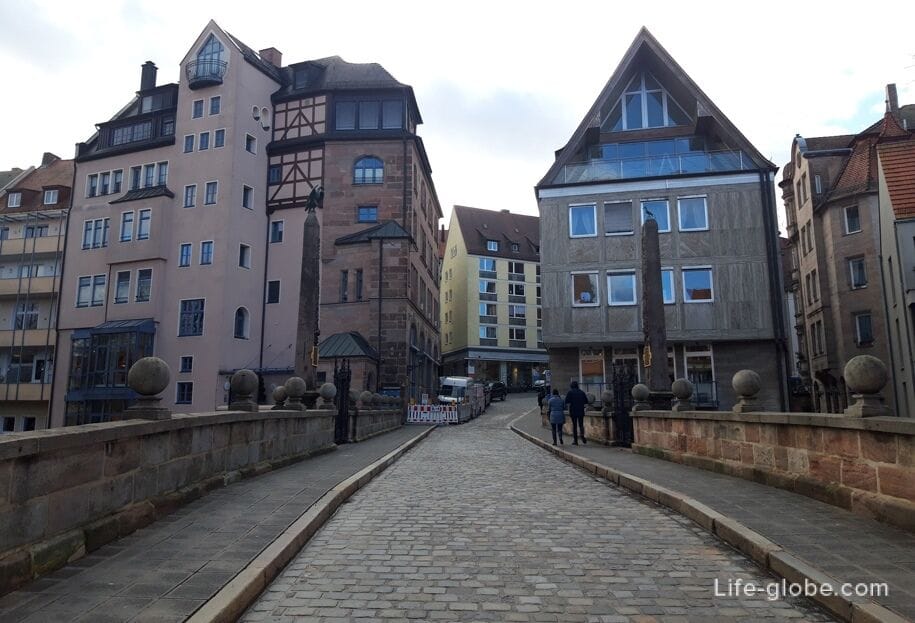
The Eastern obelisk on the bridge
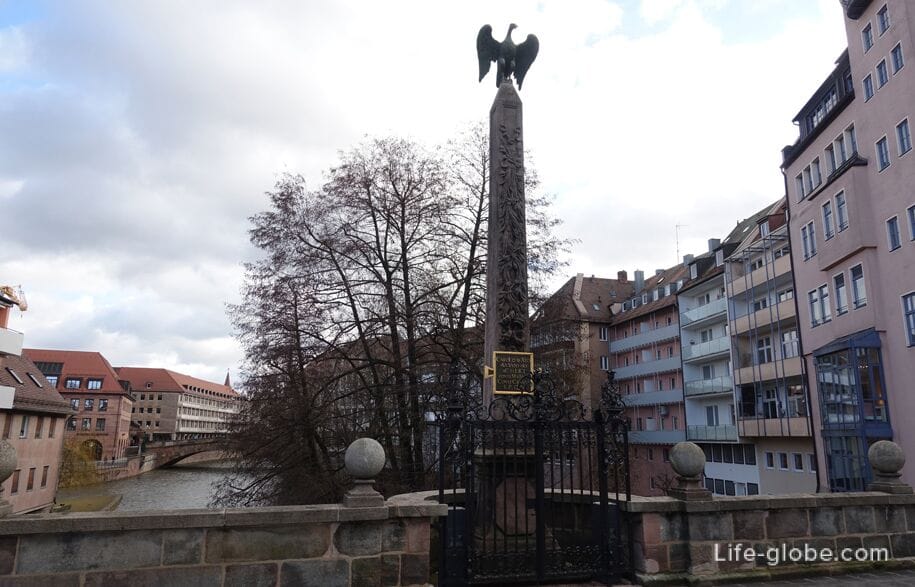
The Western obelisk on the bridge
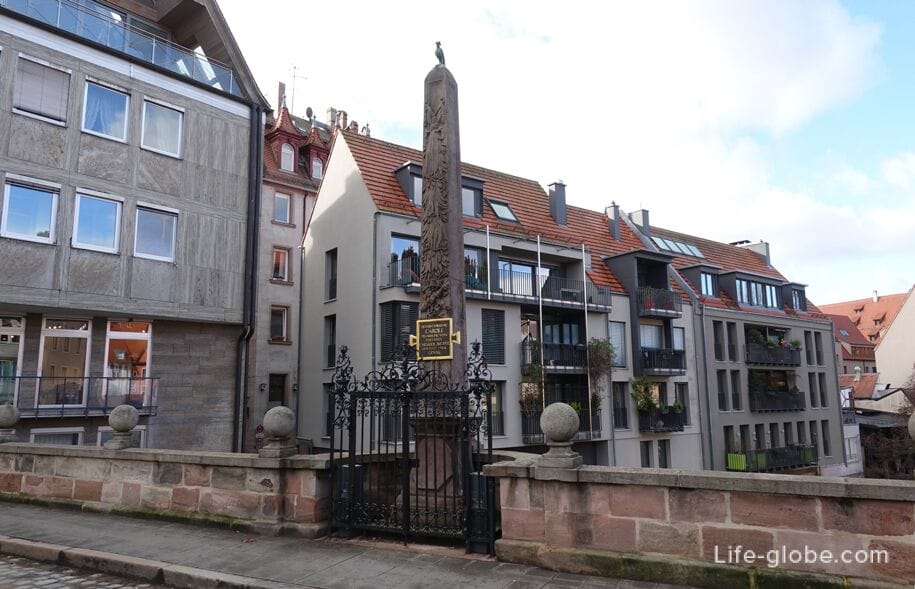
View from the bridge to the island
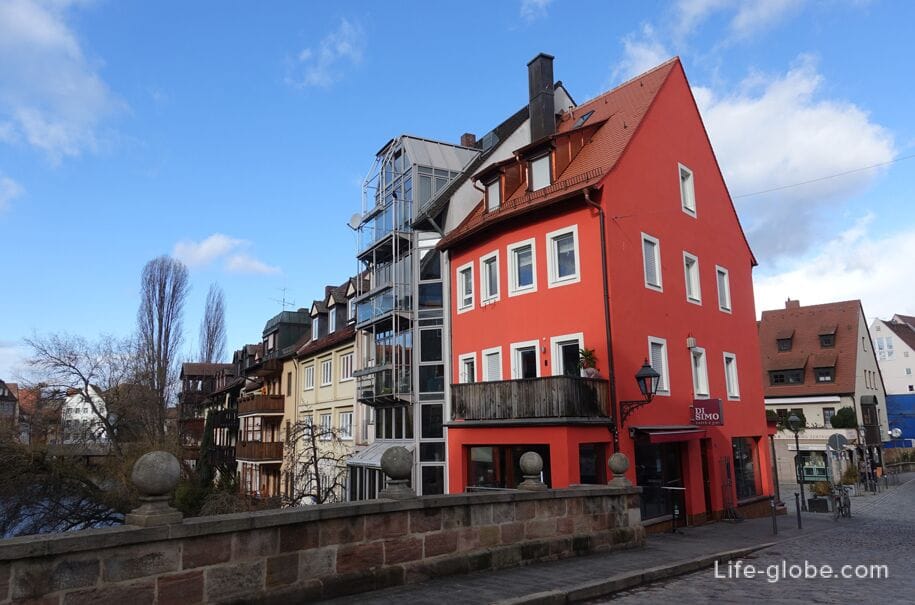
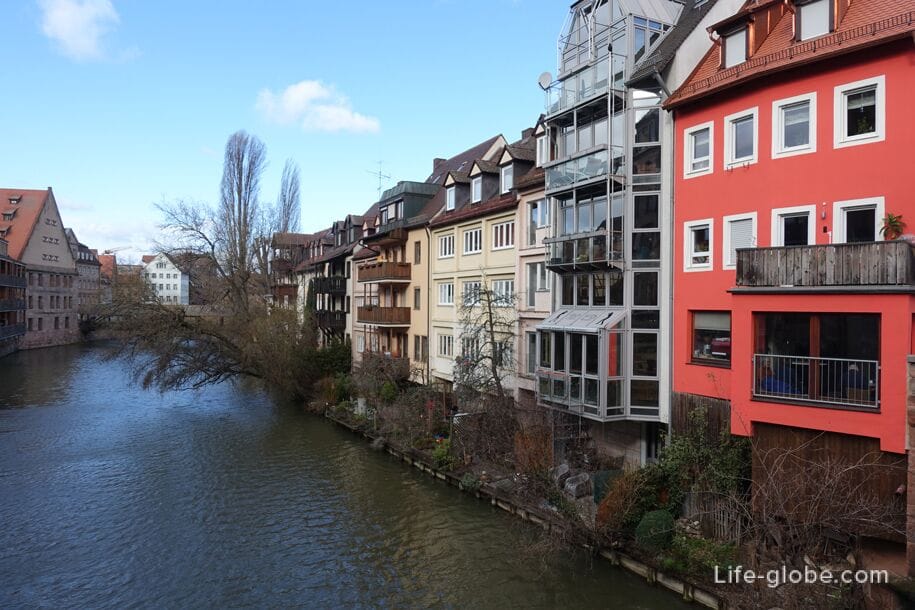
View from the bridge to the south coast of the river
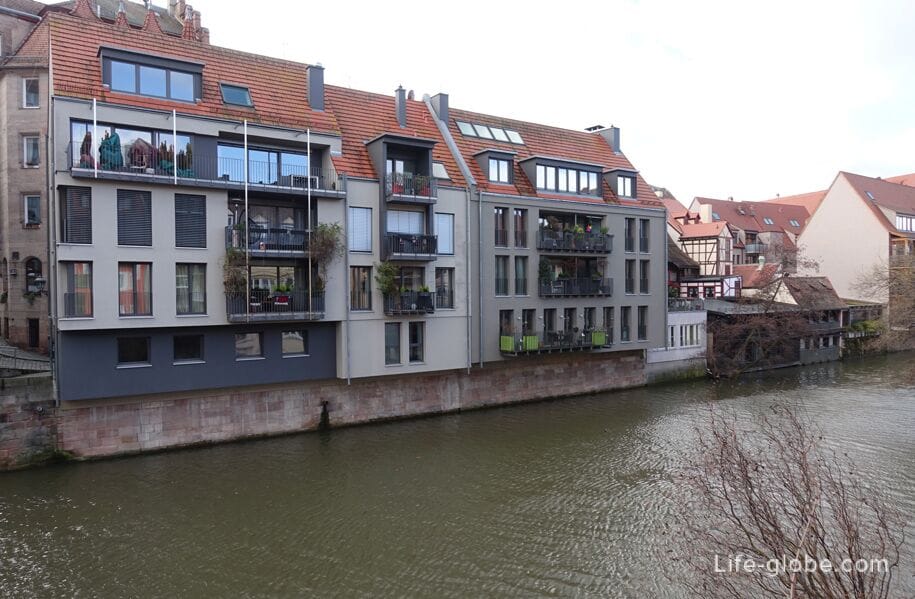
At the eastern edge of the island there is a pedestrian bridge Schleifersteg (Schleifersteg), which leads from the island to the north side of the river.
Originally, the bridge was made of wood, which was called a Pan-bridge (Pfannensteg).
After World War II, the bridge was replaced by a steel structure. In 1956, a bridge made of baton and steel was erected.
The name of the bridge "Schleifersteg" (grinding machine bridge) comes from the nearby mills.
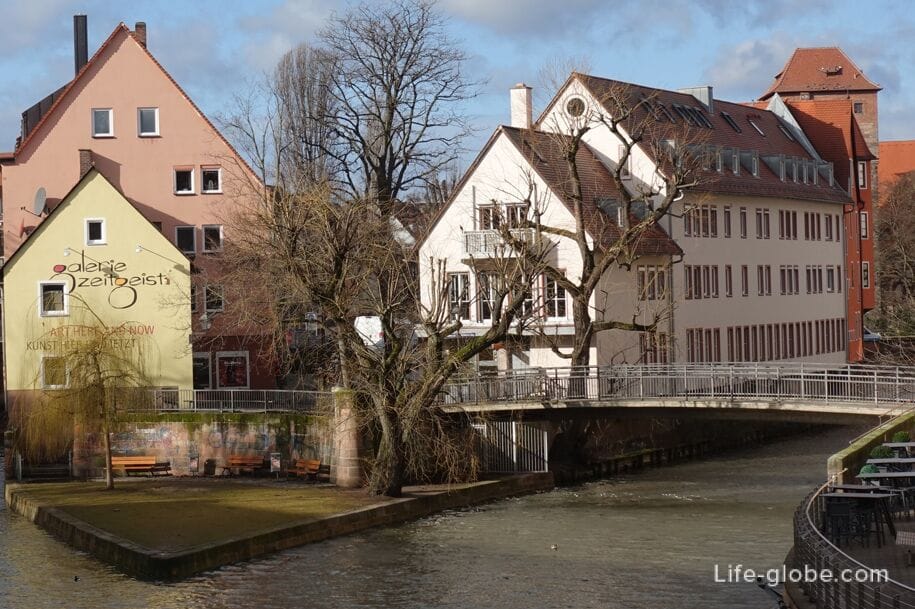
Near the island of Love, and therefore in the old town of Nuremberg, you can stay:
dasPaul Hotel offers free Wi-Fi, a restaurant, a bar, parking, luggage storage and family rooms.
The rooms are equipped with a desk, a flat-screen TV, a coffee/tea maker, and a bathroom with a shower, a hairdryer and free toiletries.
Breakfast may be included in the room rate. Link to the hotel
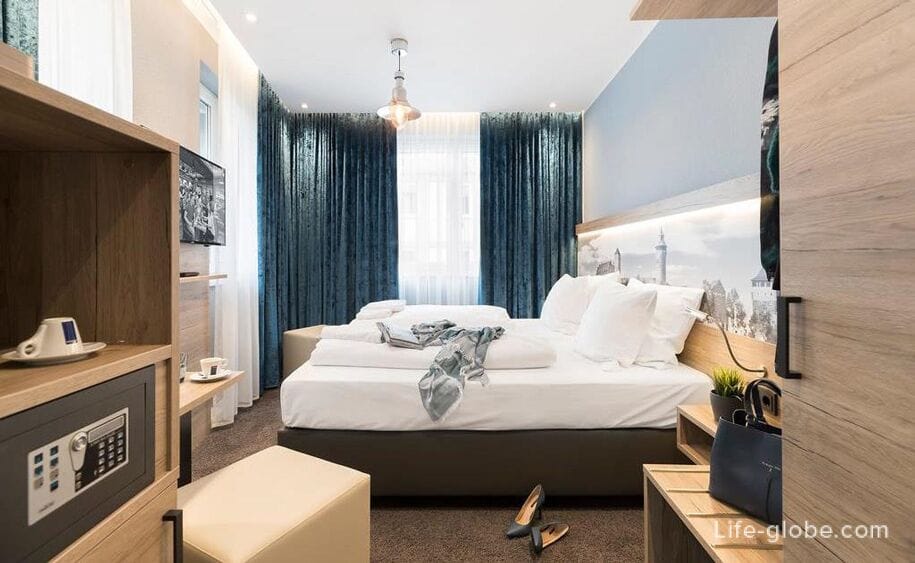
Aparthotel by dP features a restaurant, free Wi-Fi, parking and family rooms.
The apartment features air conditioning, an equipped kitchen with a dishwasher, a living area with a sofa, a flat-screen TV, a washing machine and a bathroom with a shower. There is also a refrigerator, oven, stove, kettle and coffee machine.
Breakfast may be included in the room rate. Link to the apart-hotel

3-star Hauser Boutique Hotel with a restaurant, free Wi-Fi, parking and room service.
The rooms are equipped with a flat-screen TV, a minibar and a private bathroom. Link to the hotel
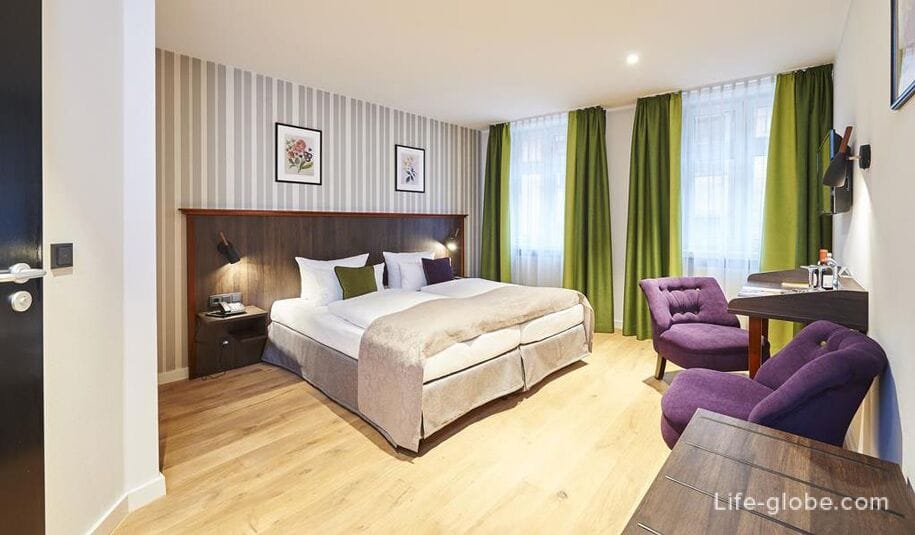
The Nuremberg Holidays Studio Apartment complex offers free Wi-Fi throughout, private parking and family rooms.
All rooms/apartments are equipped with a flat-screen TV. There is also a kitchenette, equipped with a microwave, toaster, refrigerator, stove, coffee machine and kettle. The private bathroom comes with a shower and a hairdryer. Link to the complex
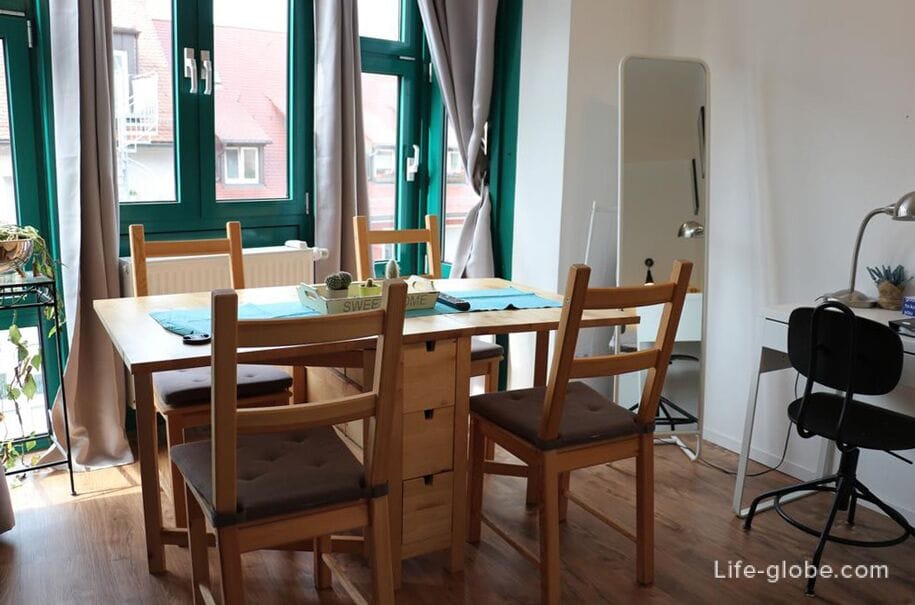
All accommodation facilities in Nuremberg, including in the city center and near the Flea Market Island, can be viewed and booked here